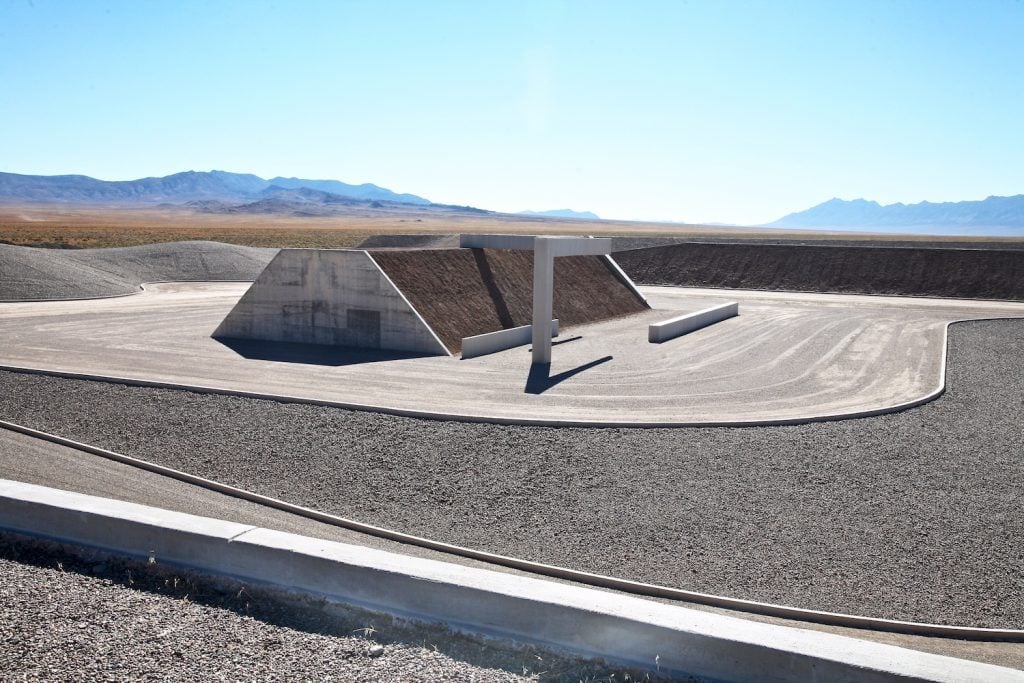More than half a century after he started it, one of land art’s greatest creators is ready to unveil his magnum opus.
That’s a lot of superlatives for a first sentence, but City, by Michael Heizer, demands it. His sprawling installation of man-made forms in the dusty Nevada desert runs a mile and a half long and half a mile wide. It’s a singular artwork, one that’s taken on almost mythological status in minds of art fans over recent decades—and, starting September 2, those fans will finally be able to see it.
The Triple Aught Foundation, a non-profit formed to oversee City, is now accepting a limited amount of single-day reservations to experience Heizer’s piece. Showing up without a booking, the organization stresses, is not allowed. Nor is it particularly easy: the site has no habitable structures and sits on private property in a rural stretch of Great Basin land with few accessible paths for cars.
The foundation has built a $30 million endowment to care for City. Moving forward, it will be under the custodianship of a coalition of major U.S. institutions: Crystal Bridges Museum of American Art (Bentonville, Arkansas), Glenstone Museum (Potomac, Maryland), the Los Angeles County Museum of Art (Los Angeles, California), and the Museum of Modern Art (New York).
Visiting City is an off-road proposition in more ways than one. Heizer’s masterpiece, which has been called the largest artwork in the world, contains no walkways, lookouts, or directional signs; there is no beginning, no end. It is designed to be explored on foot and by instinct, as guests stride among its graded gravel lanes, rounded ravines, and vast concrete structures.
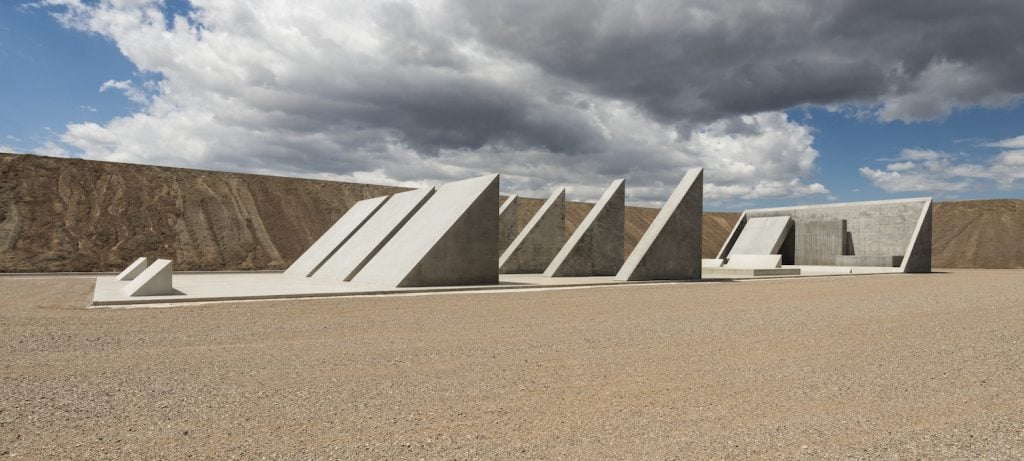
“45°, 90°, 180°,” City. © Michael Heizer/ Triple Aught Foundation. Courtesy of the artist and Triple Aught Foundation. Photo: Ben Blackwell.
Two monuments anchor the site: “45°, 90°, 180°,” which is made up of a series of massive concrete wedges that cast spiky shadows on the ground, and “Complex One,” which lives more than a mile away and centers around a trapezoidal structural that recalls an ancient burial mound. The latter monument was the first completed by the artist.
Heizer, a Nevada native whose family roots in the state go back generations, chose City’s location for its remoteness, then continued to grow the spot through the acquisition and consolidation of remote parcels of property. He began work on the installation way back in 1970 and has been chipping away at it consistently since.
“I’m a fool, alone, helplessly watching as they wait for me to die so they can turn my ranch into a gift shop and motel,” Heizer, now 77, told the New York Times in a wide-ranging profile published this week. “This is a masterpiece, or close to it, and I’m the only one who cares whether the thing is actually done.”
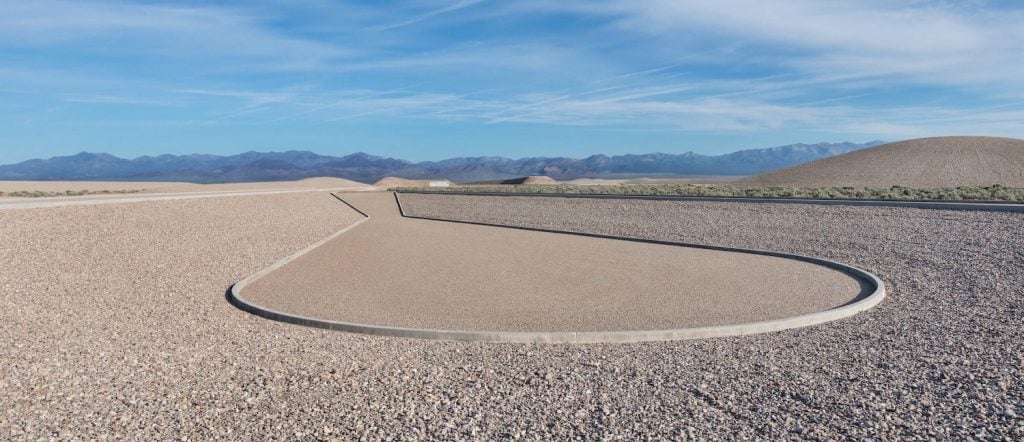
© Michael Heizer/ Triple Aught Foundation. Courtesy of the artist and Triple Aught Foundation. Photo: Ben Blackwell.
Though Heizer initially funded the construction of City himself, various high-profile collectors, dealers, and institutions have supported the project since. In 1998, he established Triple Aught, an organization now run by a board that consists of figures like Los Angeles County Museum of Art director and chief executive Michael Govan, Museum of Modern Art director Glenn D. Lowry, Glenstone co-founder Emily Wei Rales, and Heizer himself.
“Over the years I would sometimes compare Michael Heizer’s City project to some of the most important ancient monuments and cities,” Govan said in a statement. “But now I only compare it to itself.”
“It’s an artwork aware of our primal impulses to build and organize space,” Govan continued, “but it incorporates our modernity, our awareness of and reflection upon the subjectivity of our human experience of time and space as well as the many histories of civilizations we have built.”
See more pictures of Michael Heizer’s City below.
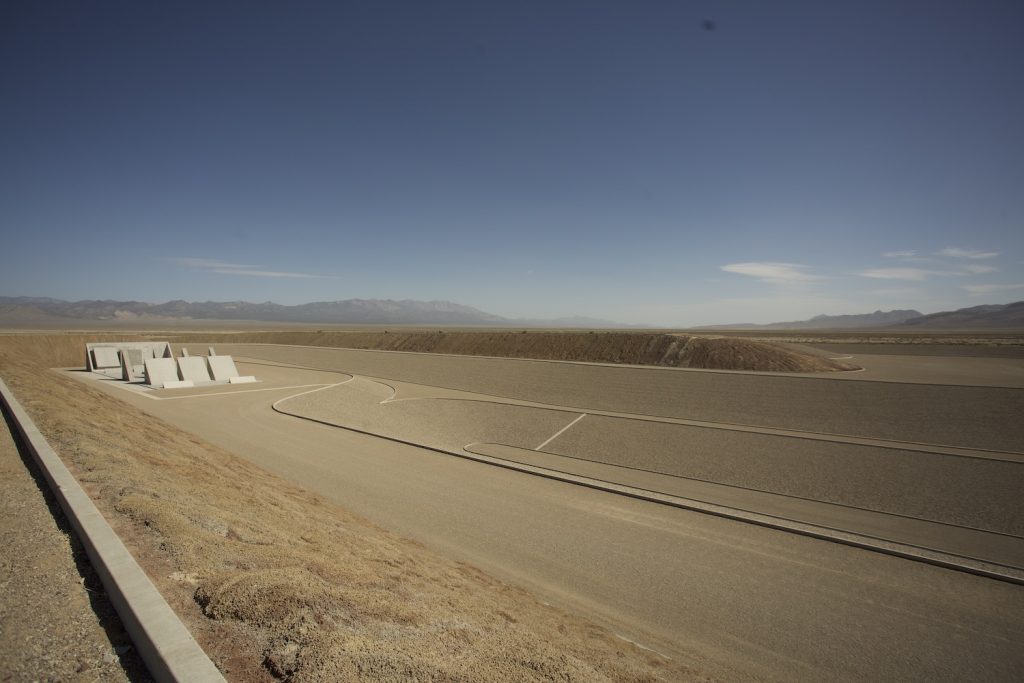
“45°, 90°, 180°,” City. © Michael Heizer/ Triple Aught Foundation. Courtesy of the artist and Triple Aught Foundation. Photo: Joe Rome.

“Complex One,” City. © Michael Heizer/ Triple Aught Foundation. Courtesy of the artist and Triple Aught Foundation. Photo: Joe Rome.

© Michael Heizer/ Triple Aught Foundation. Courtesy of the artist and Triple Aught Foundation. Photo: Joe Rome.
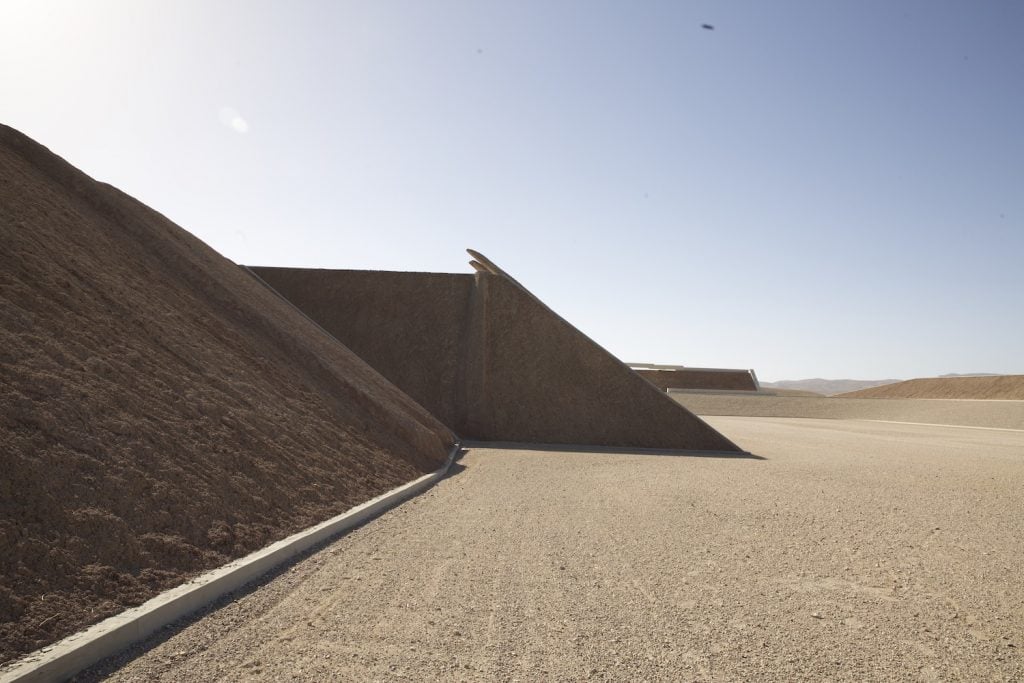
“Complex One” and “Complex Two,” City. © Michael Heizer/ Triple Aught Foundation. Courtesy of the artist and Triple Aught Foundation. Photo: Joe Rome.
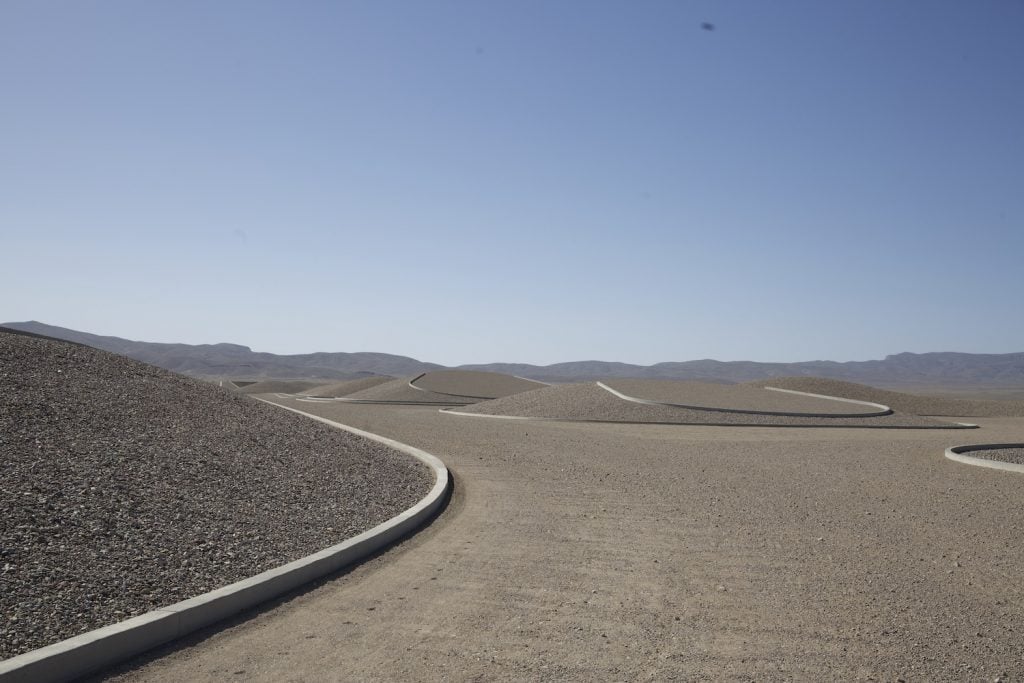
© Michael Heizer/ Triple Aught Foundation. Courtesy of the artist and Triple Aught Foundation. Photo: Joe Rome.
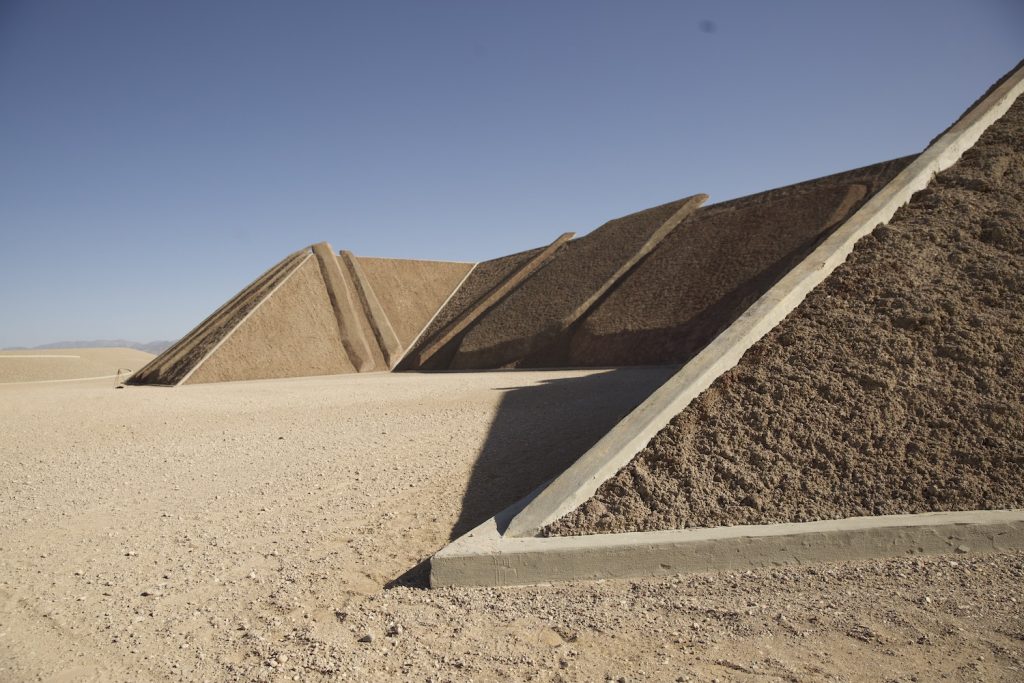
“Complex Two,” City. © Michael Heizer/ Triple Aught Foundation. Courtesy of the artist and Triple Aught Foundation. Photo: Joe Rome.
